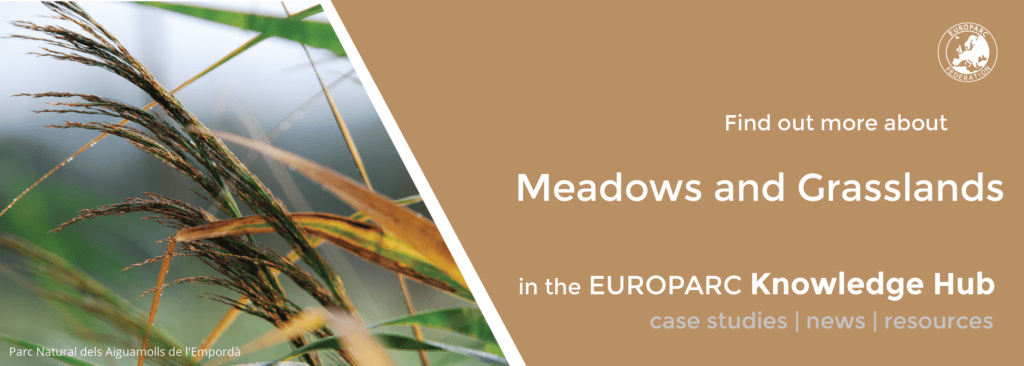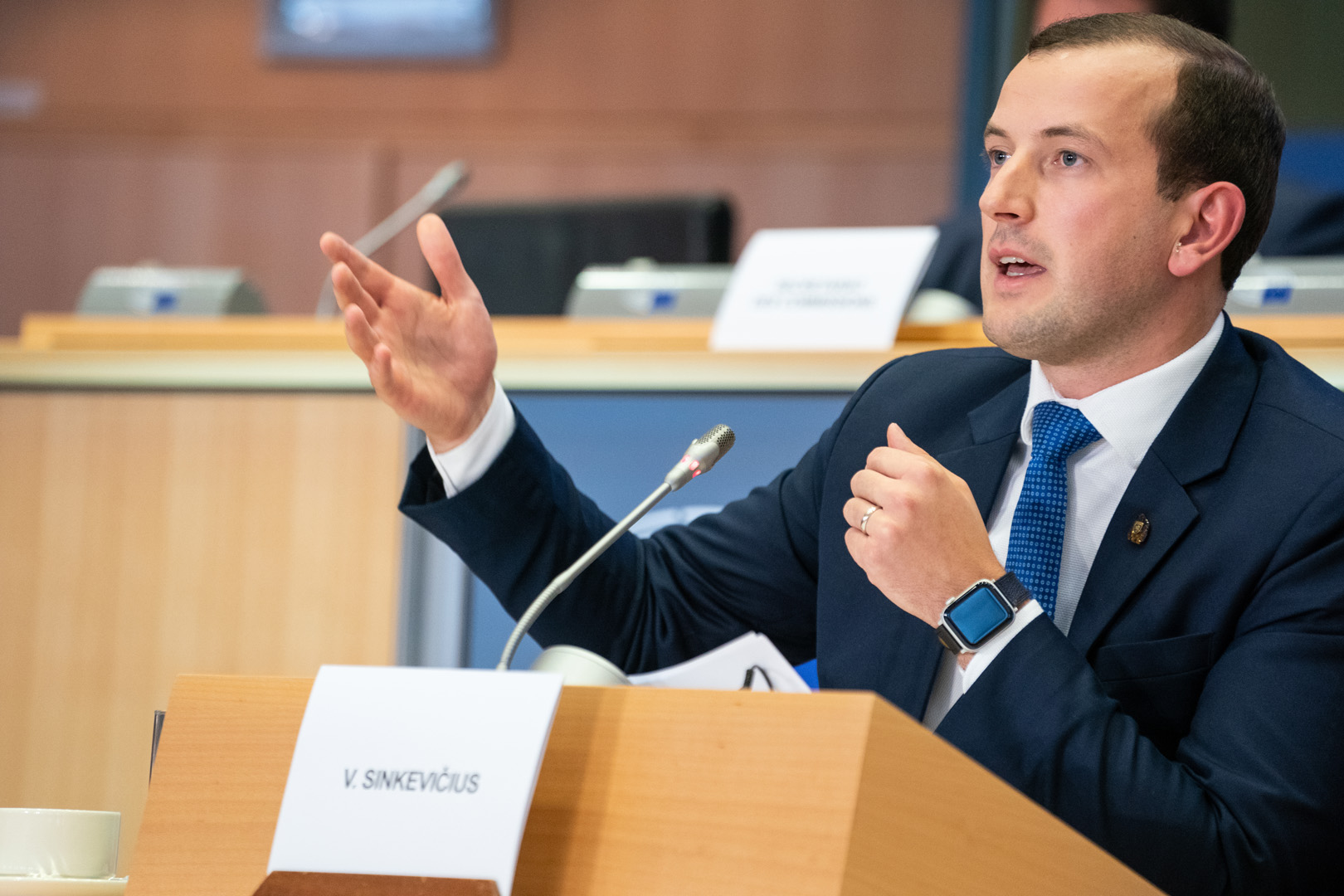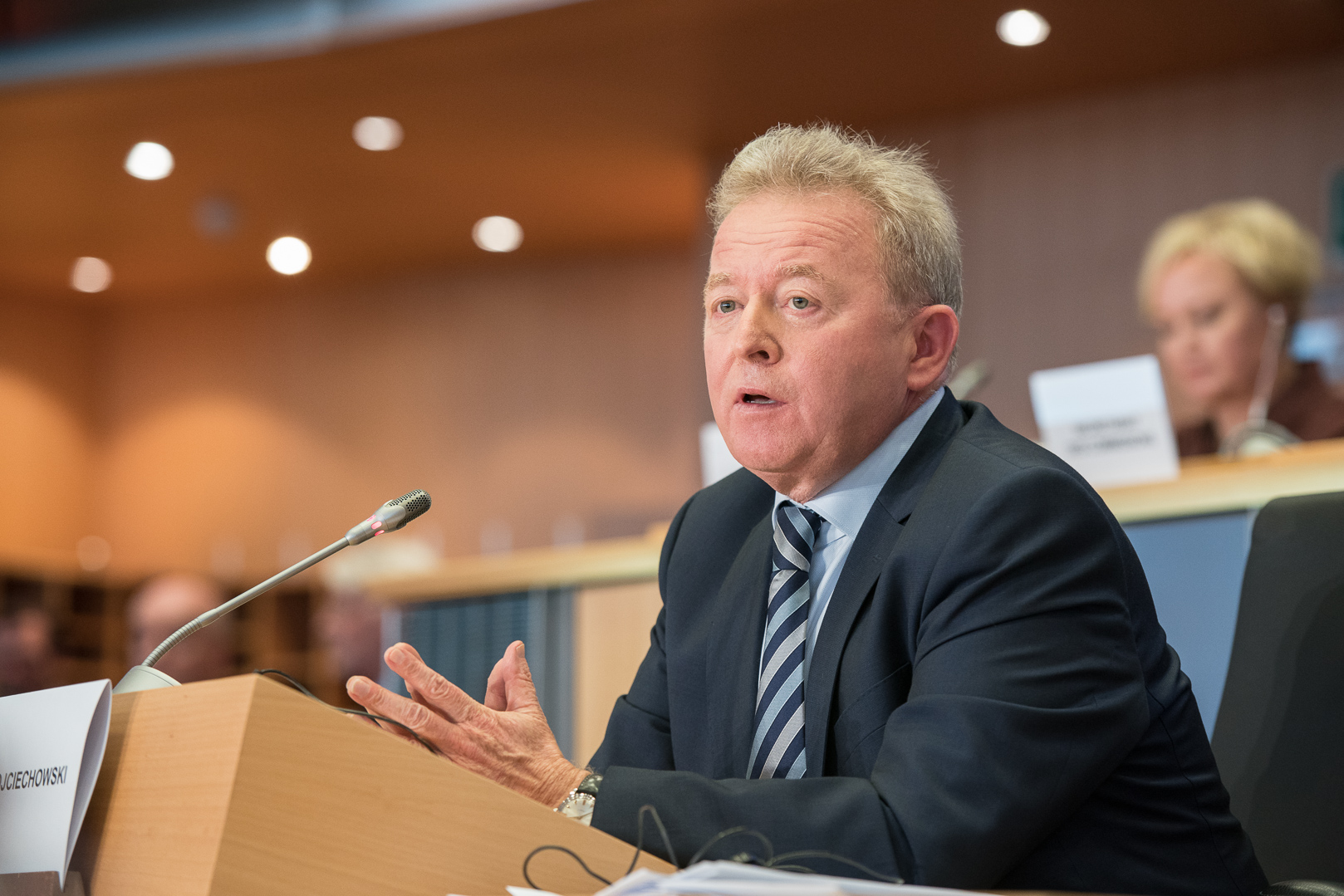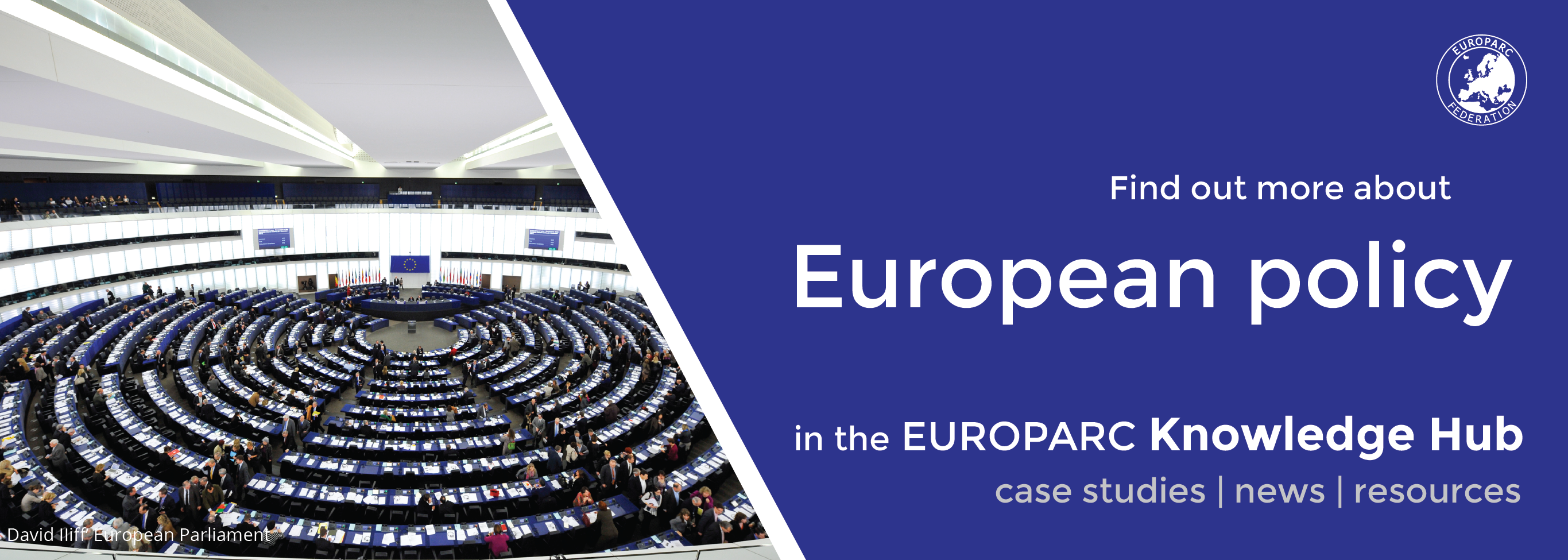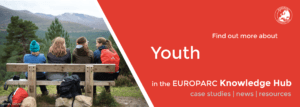The Good Principles for Outdoor Sports now in 6 languages!
On the occasion of the 2019 European Week of Sports, the EUROPARC Federation and the European Network of Outdoor Sports (ENOS) launched simultaneously the 10 Good Principles for Outdoor Sports in Protected Areas (PAs) during their respective Conferences. This is the result of a fruitful cooperation between both associations and the first outcome of the Memorandum of Understanding signed last year by EUROPARC and ENOS.
The Good Principles for Outdoor Sports now in 6 languages!
After the launch of The 10 Good Principles for Outdoor Sports just a few weeks ago, it is time to continue inspiring people to follow them. The Principles aim to promote good conduct among outdoor sports practitioners. For that, we are adapting the Good Principles in different digital formats and languages so they can be endorsed by all Protected Areas across Europe.
The Principles are now available in 6 new languages: French, Spanish, German, Czech, Italian and Portuguese.
What can you do?
Endorse the principles and share them on your website, among your contacts and on your social media accounts with #OutdoorSports. You can also inspire your visitors, by displaying the Principles in your information points and visitors centers. We are also preparing communications material that you can personalise with your Park´s photos and share with your visitors.
If you would also like to have the Principles in your language, download this file and send us back the translated version to a.robles@europarc.org. We will gladly produce the promotion materials in your language.
You can also contribute with your experience. The next step of EUROPARC and ENOS´ cooperation is to identify good practice for each sports discipline, in order to create principles and guidance that can support park managers and inspire practitioners. So if you have good examples of sports events you have organised or measures you have implemented in our Protected Area or region, we invite you to submit a case study.
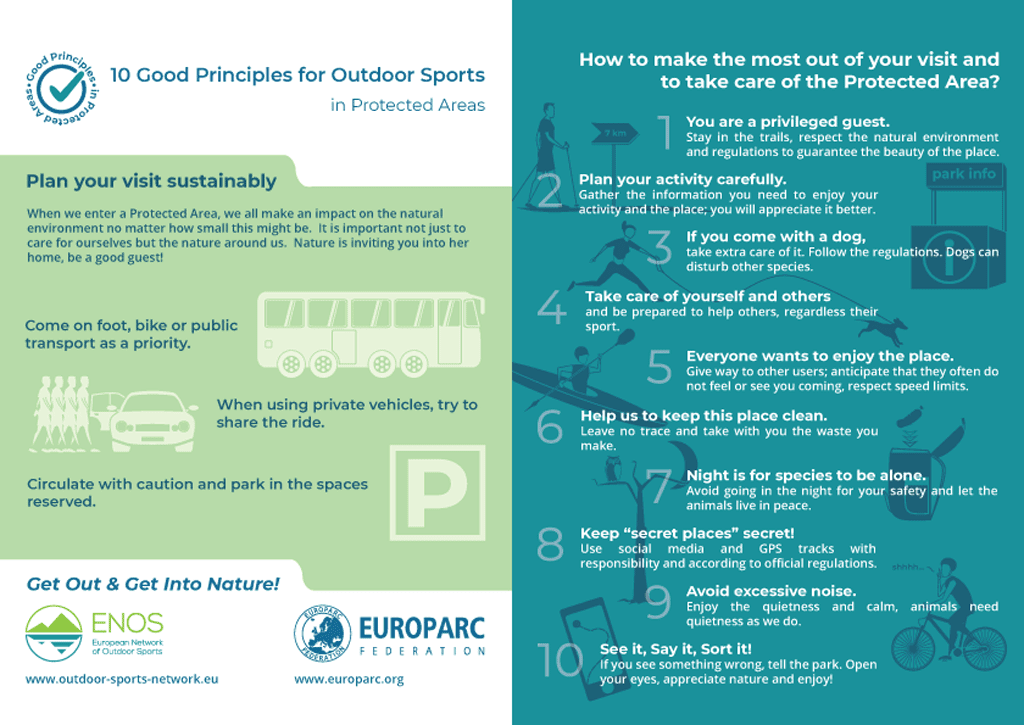
10 Good Principles for Outdoor Sports leaflet (Download it on the Outdoor Sports page)
Download The Good Principles for Outdoor Sports:
PDF versions
FR 10 principles for outdoor sports
DE 10 principles for outdoor sports
ES 10 principles for outdoor sports
CZ 10 principles for outdoor sports
IT 10 principles fro outdoor sports
PT 10 principles for outdoor sports
CAT 10 principles for outdoor sports
PNG versions
FR_Good Principles Outdoor Sports (png)
DE_Good Principles Outdoor Sports (png)
ES_Good Principles Outdoor Sports (png)
CZ_Good Principles Outdoor Sports (png)
IT_Good Principles Outdoor Sports (png)
Restoring semi-natural grassland with landowners and farmers: a case study from Estonia
Alvar -LIFE to alvars project Website
Alvars are a semi-natural grassland, very limited in their global distribution. One third of them are in Estonia. LIFE to Alvars cooperates with landowners and farmers in order to maintain the second richest ecosystem of the country. As a recognition of the hard work, the project received a Natura 2000 Award in the category “Socio-economic benefits” in 2018.
The decline of pastures, decline of biodiversity
Alvar grasslands are semi-natural grasslands with thin lime-rich soil on limestone bedrock. The number of vascular plants is the richest in species in Estonia after wooded meadows.
Within the European Union, alvars are only found in Sweden and Estonia, with minor areas in south-west Finland. The decrease of alvar grassland habitat area started in the 1950s when the traditional extensive agricultural activities were widely replaced by intensive land-use. In 2013 less than 30% of the Estonian Alvar surface (around 2000 ha) were under annual management, which is necessary for the long-term persistence of this habitat type.
Read also these two studies about grassland management in protected areas in post-communist countries and about the management of wet-grasslands.
The emergence and survival of these semi-natural communities, or heritage communities, is closely linked to traditional activities. Pastoralism is the main human activity that allows these enormously biodiverse grasses to persist.
Decline in grazing has led Alvars to overgrow with shrubs (mainly Juniperus communis) and trees (mostly Pinus sylvestris). The abandonment and afforestation are a threat to its integrity.
Why should we protect them?
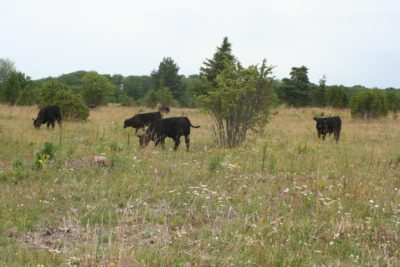
Alvar
- Exceptional biodiversity as compared with intensively managed pasture, providing habitat for wildlife.
- Valuable carbon store, especially without reseeding and fertilizers.
- Responsible for major part of the environmental public goods of European farming.
- Other ecosystem services such as preventing erosion and nutrient migration and filtering water.
From the Iberian dehesas to the Nordic wooded meadows, they’ve been actively farmed for centuries, being an integral part of the forage system.
The Actions: Forestry and community involvement
Carried by the Estonian Environmental Board, the five years-project (which ended in September 2019) has worked out and successfully used a completely novel approach to alvar restoration. It has also contributed to the Estonian Nature Conservation Development Plan 2020.
The following actions were taken within the project:
- Removing trees and shrubs with common forestry and communal machinery.
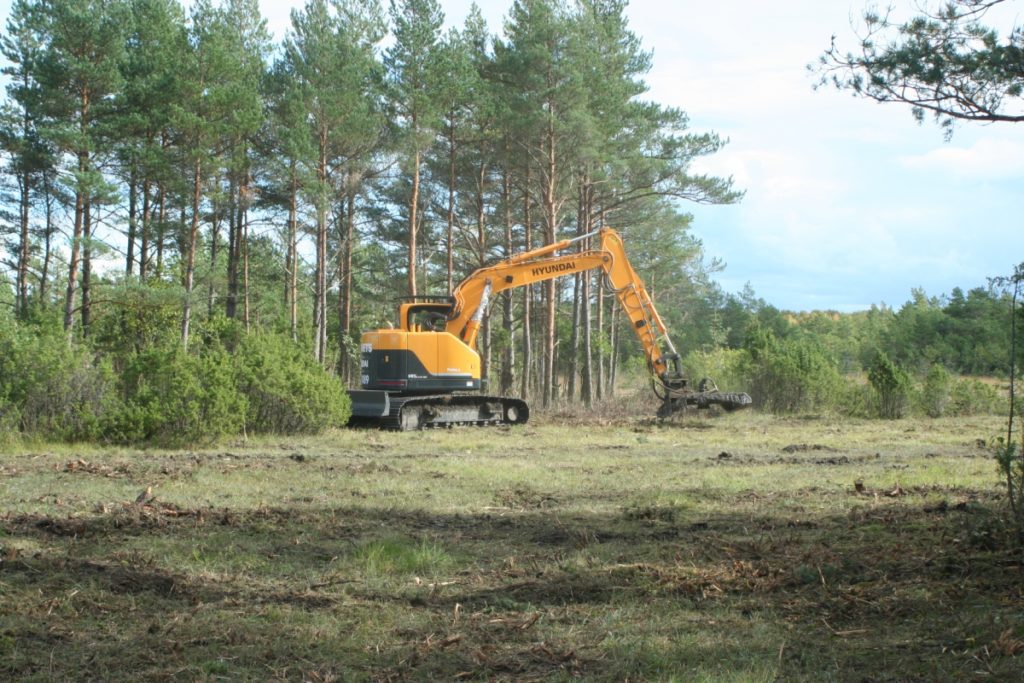
Chain crusher – LIFE to alvars project Website
- Providing equipment, so that each restored area is equipped with grazing infrastructures such as shelters and access to water and roads to ensure continuous management.
- Partnership contracts were signed with land-owners, farmers and the project.
- Dissemination actions
- Annual public meetings, working groups, and study trips were held.
- Promotion of the project with information boards, leaflets, exhibitions and media work.
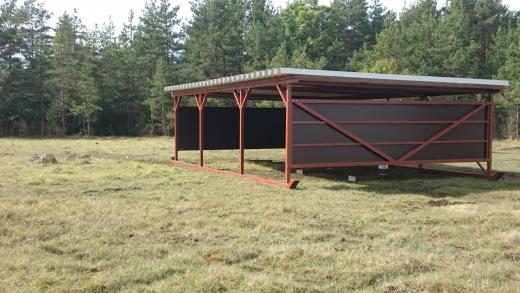
Animal shelter – LIFE to alvars project Website
Results:
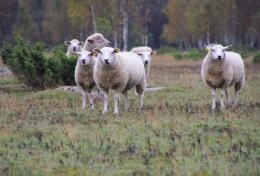
LIFE to alvars project Website
- Altogether, 2500 hectares of most valuable alvar grasslands were restored and the areas have joined the CAP semi-natural grassland management scheme.
- All the restored areas are equipped with grazing infrastructure for their subsequent management by local farmers.
- 600 landowners and 41 local farmers and farming companies were involved in the restoration activities
- Restoration has resulted in a significant increase in plant species richness, particularly in former afforested and shrub-covered areas.
It is all about people. The opinion of the general public and people involved in the project is a key element in gaining success in large scale restoration on private land.
“The community involvement is fundamental when working in private land. A lot of effort has been put into communication and convincing. Finding trustworthy local farmers interested in management and making agreements for continuous management is the second most important key element in maintaining the restoration result long term,” said Ms Annely Holm, from the Estonian Environmental Board and Project Manager of LIFE to Alvars.
LIFE to alvars project was financed by the European Commission LIFE + Nature programme in 2014. Project identification code is LIFE13NAT/EE/000082. The project is co-financed by the Estonian Environmental Investment Centre and by the partners’ self-financing. Project budget is 3 725 865 euros. Lead partner is the Estonian Environmental Board and partners are the University of Tartu, Estonian University of Life Sciences and Seminatural Communities Conservation Association.
Towards a new European Commission with a strong Environmental approach
During the first weeks of October, the Commissioners-designates appointed by Ursula Von der Leyen were heard by the Members of the European Parliament (MEPs) to decide on the suitability of these candidates for the respective proposed positions. The round of public hearings is over and soon, the European Parliament will vote on the full College of Commissioners.
Towards a new European Commission
After the election of Ursula von der Leyen as the new President of the European Commission (elected by the European Parliament on the past 16th of July 2019), the German politician became the first woman leading the EU Commission.
How will the ambitions of von der Leyen’s Presidency for the next five years fit with the interests of European Protected Areas?
On the principle of ‘‘doing it the European way’’, the President has already launched her first statements and headline desires:
A European Green Deal, an economy that works for people, a Europe fit for the digital age, protecting our European way of life, a stronger Europe in the world and a new push for European democracy.
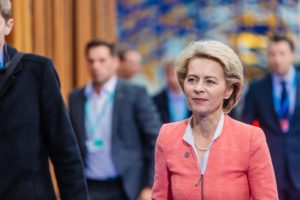
EU Commission President, Ursula von der Leyen by Arno Mikkor
What is interesting about these objectives is the close relationship with an ambitious climate agenda and the wish to make Europe the first climate-neutral continent by 2050.
Ursula also underlined the importance of strengthening European democracy and creating a fair social market, with an emphasis on people and regions, which she aims to leverage through a “Just Transition Fund” to support local communities in coal-heavy regions across Europe away from fossil fuels, and through a “Stability and Growth Path“.
Climate change is definitely a priority for Protected Areas:
it will be important to see if and how the new Commission will include in the climate agenda not only the energy and coal and fossil fuel dependency but also the impact and mitigation measures connected with nature conservation. EUROPARC is actively working on supporting parks in mitigation and adaptation measures, and later this month, we will have a (free) webinar exclusively dedicated to it.
A strong commitment to the Environment
Looking at the environmental challenges the world is facing, von der Leyens’ approach seems ambitious and responsible, as she puts at the top of European priorities the target to reduce by 50% (or even 55%) CO2 emissions by 2030, through the creation of a Green Deal for Europe and the first European Climate Law.
Other important measures will be the creation of a Sustainable Europe Investment Plan and a Climate Bank, a raised effort to meet the Sustainable Development Goals (SDGs), an updated Circular Economy Action Plan with special attention given to single-use plastics. In addition, the carbon emissions policy will be strengthened and include a new Carbon Border Tax, as she considers that ‘‘all of us and every sector will have to contribute to reducing emissions. Emissions must have a price that changes our behaviour’’.
Ursula’s Commission will also present a new Biodiversity Strategy for 2030 and launch the Farm to Fork Strategy in order to support European farmers towards a more sustainable food chain production.
Not long ago, even the word “biodiversity” was considered too technical to be used in the dialogue with public and with decision-makers.
Today biodiversity has become a priority for the Commission at the highest level. European Protected Areas can be nothing but happy to see this big change from the past.
Although the Commissioners’ designation is not yet definitive, these are the names you should know (and the Public hearings you shouldn’t’ miss!):
- Frans Timmermans is proposed as Executive Vice-President responsible for the EU Green Deal
- Virginijus Sinkevičius is proposed as Commissioner for Environment and Oceans
- Janusz Wojciechowski is proposed as Commissioner for Agriculture
Virginijus Sinkevičius (Environment & Oceans, Lithuania)
Despite his background in economics, the Lithuanian Virginijus Sinkevičius will have the mission of conserving Europe’s natural environment and work for a prosperous and sustainable fishing, with a thriving blue economy. Virginijus will be the youngest Commissioner-designate in the history of the EU, and for the first time, ‘Oceans’ will be included under the environment portfolio (before no mention was given to Oceans, simply to “maritime affairs”). Sinkevičius’ most important priorities include:
- A new Biodiversity Strategy for 2030
- the 2020 Conference of the Parties to the Convention on Biological Diversity
- a Zero-pollution ambition
- a Circular Economy Action Plan
- a Microplastics Action Plan
- the implementation of the reformed Common Fisheries Policy
- ‘Farm to Fork’ strategy on sustainable food
- an international ocean governance
- and a new approach for a sustainable blue economy
Sinkevičius got the green light from MEPs after presenting himself well prepared for the role during his public hearing. “For us, the ambitions for 2050 are not just a target on a piece of paper, we have to live it” affirmed the young Commissioner-designate when talking about the climate neutrality objective settled by Von der Leyen in her mission letter. At the end of his speech, Virginijus promised that his mandate will be the greenest Europe has ever seen, triggering strong applause from a large part of the hemicycle.
This mandate will be the greenest that Europe has ever seen (Virginijus Sinkevičius)
Several aspects of the Mr Sinkevičius’s mandate will be important for Protected Areas
As already mentioned, the biodiversity strategy will be the most important one. EUROPARC is already in dialogue with the European institutions for years: we really would like to see the role of national and regional protected areas in the implementation and achievement of the EU policies. And recognised at high-level, in a stable and strong way: all parks, indeed, reinforce the Natura 2000 network, which, alone, cannot attain the conservation of the European habitats and species. Read our policy paper on European Protected Areas and Sustainable Agriculture.
The Farm to Fork strategy jointly entrusted to the Commissioner of Environment and to the Commissioner of Agriculture, and coordinated by the Commissioner for the Green Deal, will imply a new consideration of the connection between farming, nature conservation, health and environment, as always claimed by the European parks.
Last but not least, the importance given to oceans governance and to the blue economy let hope for renewed and reinforced political attention toward Europe´s marine protected areas.
Frans Timmermans (Executive Vice-President for the European Green Deal, Netherlands)
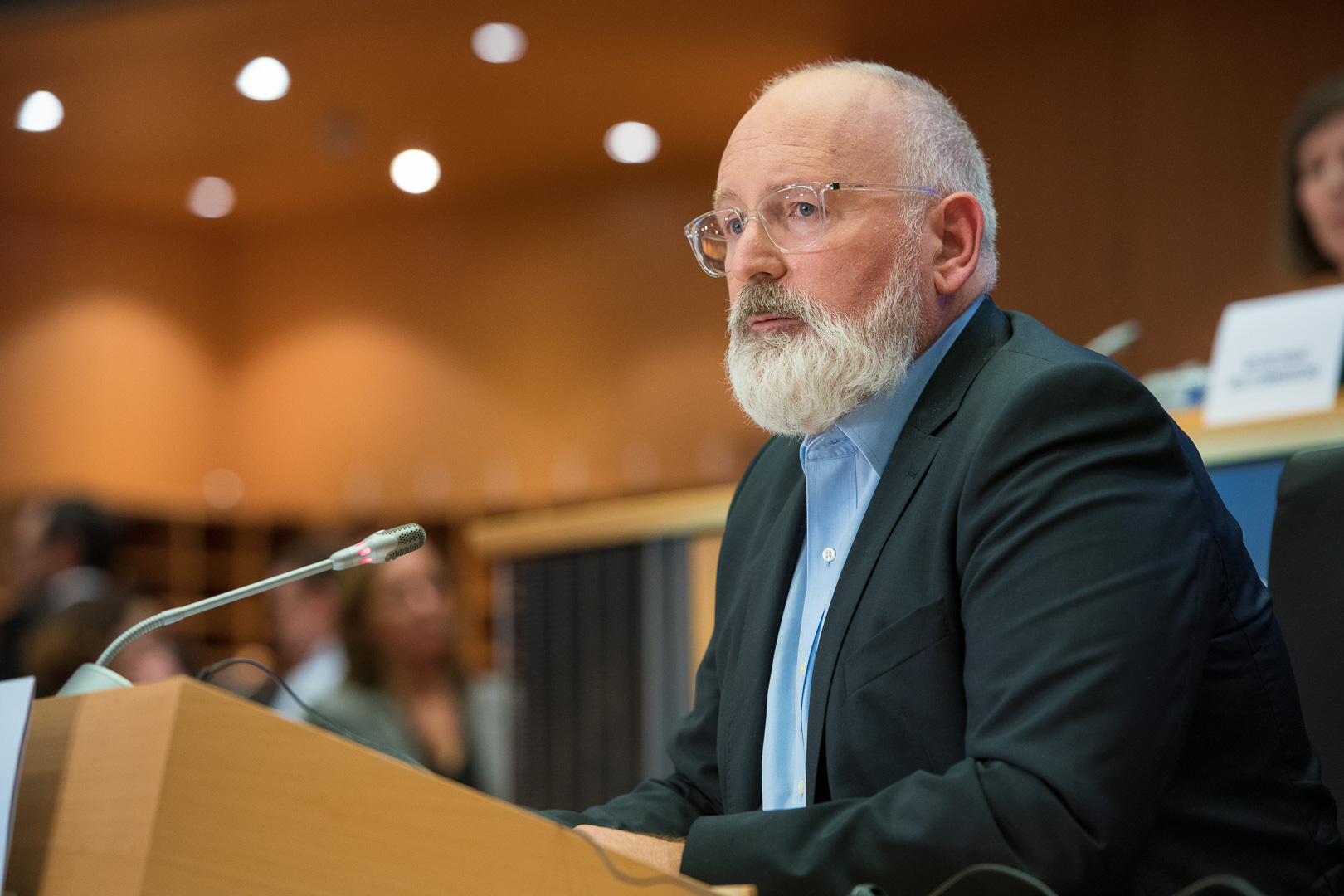
Hearing of Frans Timmermans (the Netherlands) – Executive Vice President-Designate – European Green Deal (News, European Parliament)
Timmermans will be in charge of the European Green Deal and Climate Action (with the European Climate Law and European Climate Pact), which should be defined within his first 100 days in office. The Dutch Social Democrat will be Climate Chief and for that, he will take some important measures as reducing emissions by 2030 financed by the new “Just Transition Fund”.
He also promised to control transport emissions stating “I don’t want a car-free Europe. I want emission-free cars in Europe”. In regards to the energy transition, Timmermans added “it’s absolutely clear there’s no future in coal”, a strong statement that won the approval of the MEPs and made him being considered as one of the best candidates for leading the new Commission. As a skilled politician, he underlined the importance of international cooperation in fighting climate change and the role of the Europen Union in setting up new environmental standards for the world.
In leading the work on the European Green Deal, Timmermans will ensure that climate, energy, environment are fully taken into account in all political dimensions. Therefore, his role will be to guarantee coherence between the EU policies. In particular, looking at the Protected Areas perspective, it is important to underline
the declared ambition of this Commission that Europe must lead the world when it comes to protecting our biodiversity.
Timmermans will ensure the Commission mainstreams biodiversity priorities across all policy areas, notably trade, industry, agriculture, and maritime affairs. To do this, Timmermans will coordinate also the work on the Biodiversity Strategy for 2030.
Janusz Wojciechowski (Agriculture, Poland)
The previous Polish MEP Janusz Wojciechowski committed to achieving a modern and sustainable European agriculture. Despite his failure at the first hearing – as his answers did not convince the MEPs in the first round – he did get approval in the second round, when he opted to speak in Polish, his native language, to better express his intentions.
Wojciechowski has a large experience in agriculture (he was a member of the AGRI Committee in the past European Parliament) and underlined that special attention will be given to small farmers. He will be in charge of some important decisions like the new Common Agricultural Policy (CAP) for 2020, which will cover topics such as animal welfare, food quality and competitiveness, and will have a very close relation with climate change, landscapes, and biodiversity.
Together with the Commissioner of Environment, he will be in charge to develop the ‘Farm to Fork’ strategy for sustainable food, looking at how the agri-food sector can improve the sustainability of food production across the food chain, including through organic production.
Janusz will be also in charge to develop a new long-term vision for rural areas.
This last point is probably one of the most important for Protected Areas perspective: it will be necessary that the role of Protected Areas in the rural development will be recognised by the EU institutions and also by the Member States in the elaboration of the National Strategic Plans under the new Common Agricultural Policy.
The proposed Commissioners will be finally elected by the European Parliament soon, but a positive conclusion is evident: the aim of building a greener European Union, ready to act for climate and environment.
Cairngorms Youth Action is recruiting!
Source: Cairngorms National Park website.
The Cairngorms Youth Action Team was officially launched on Monday 7th October by Mairi Gougeon, the Minister for the Environment and Rural Affairs. The Team is now looking for people aged 14-26 years from all over Scotland, who want to get involved in the future of the Cairngorms National Park.
Join the Cairngorms Youth Action Team
Cairngorms Youth Action is a new project developed by the Cairngorms National Park Authority to help address the issues identified by young people and outlined in the EUROPARC Youth Manifesto.
On the occasion of launching the Cairngorms Youth Action, the Minister for the Environment and Rural Affairs, Mairi Gougeon, said:
It is vital that Scotland’s young people are listened to and included in decisions that affect their future, and the Cairngorms Youth Action project will do just that: empowering young people to play a strong role in creating a sustainable future for the Cairngorms – a vital piece of our natural heritage.
Cairngorms Youth Action aims to:
- be the voice of youth in the Park by recruiting young people to form the Cairngorms Youth Action Team.
- develop a procedure to fund young people’s ideas about living, learning and working in the Park by giving them a grant.
- organise educational, exciting and innovative events for young people in the Park.
Apply now!
Do you live in Scotland and are you between 14 and 26 years old? Do you want to participate in a meaningful and representative discussion about issues related to the park with a group of your peers? If you would like to join, apply here and someone will be in touch. For more information on the application process, email alansmith@cairngorms.co.uk.
Watch a short introductory video made by the Cairngorms Youth Action Team:
Purpose
Cairngorms Youth Action is an empowering and inspiring platform for young people to share and develop ideas that lead to proactive participation in decision making. It will engage with the natural and cultural heritage of local rural communities and enable young people to tackle issues and create positive change.
By including the voice of young people and their constantly evolving ideas, we can create a sustainable future for our park.
About the Youth Manifesto
The EUROPARC Youth Manifesto is a source of ideas and inspiration for decision-makers in Protected Areas and rural communities to ensure the involvement and empowerment of young people. Being the the decision makers of tomorrow, young people play an important role in looking after Europe’s Protected Areas. They should be given the chance to have a say and help leading the way to a sustainable future of our parks already today.
It is vital that young people get involved in the governance of Protected Areas, so they can share their perspectives on the issues that will impact their future development and that of our natural and cultural heritage. And it is now that they can develop the skills it will take to manage resilient parks and build sustainable communities.
Learn more about our activities for young people between 12 – 25, empowering them to grow close connection with nature. Get an idea of our Junior Ranger Programme aimed at young people aged 12-18, and find out about opportunities with our Youth+ Programme aimed at youngsters over 18!
